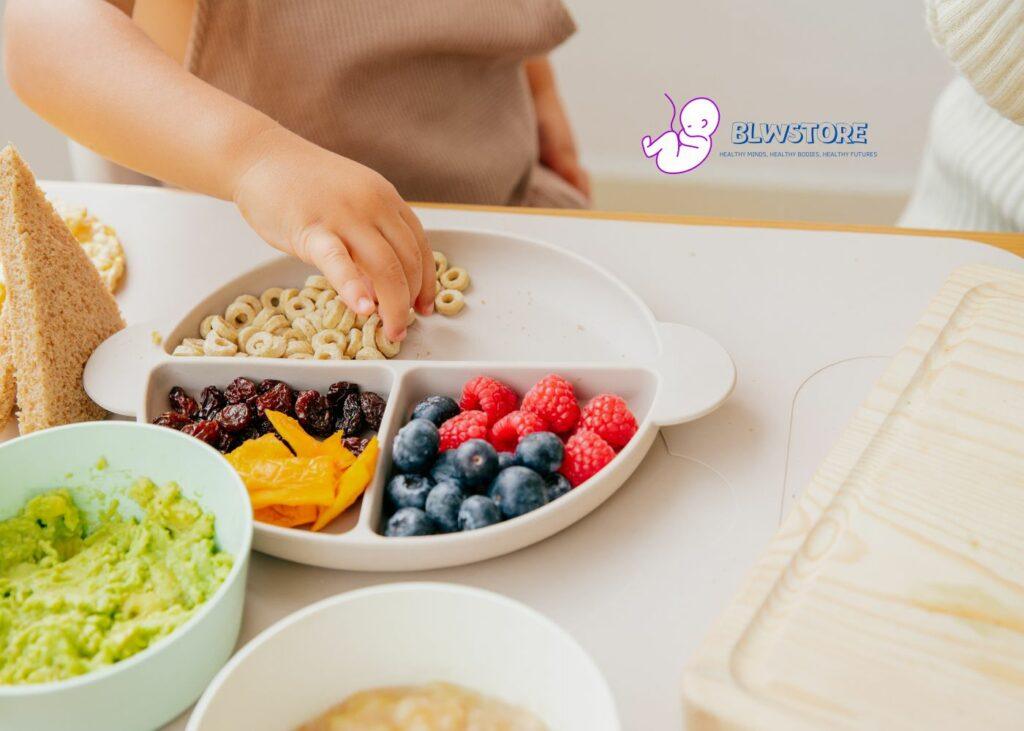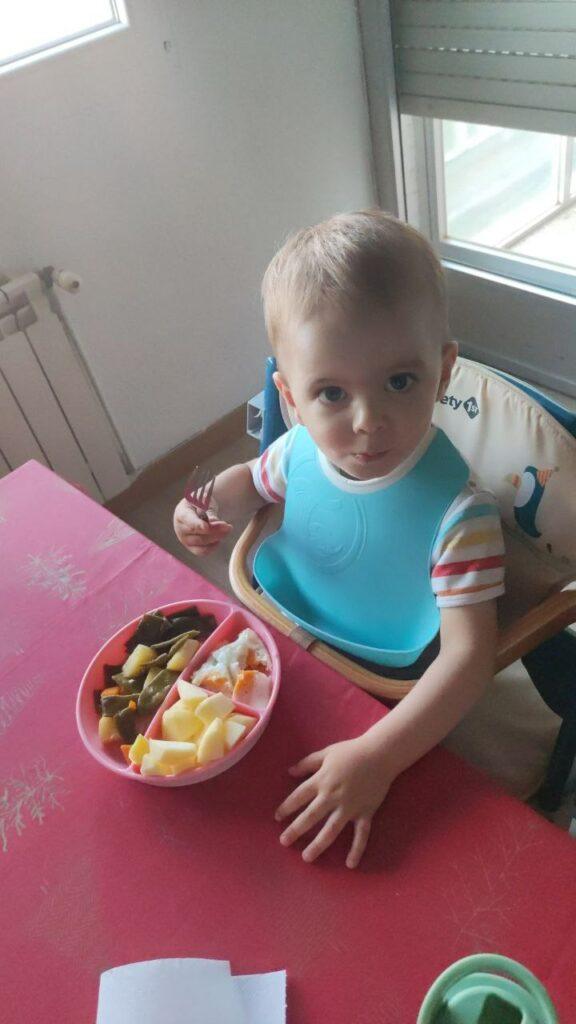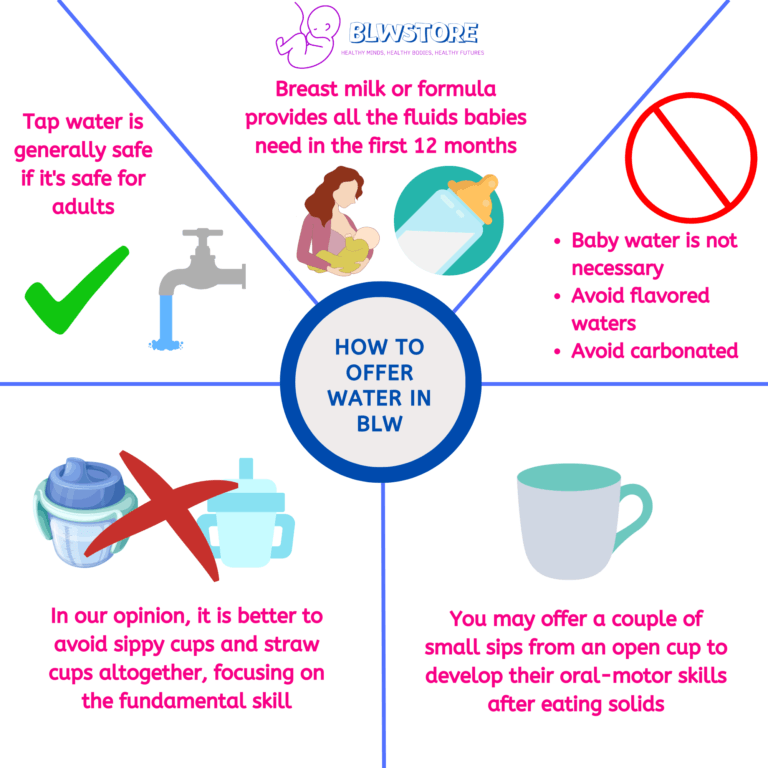
Taking the plunge into giving your child solid foods can be intimidating; with so many options and advice out there, it’s hard to know where to start.
But there’s a simple solution to make meals simpler and more delightful for everyone: divided plates. These plates don’t just make meals look great, but they also instruct portion control and engender a loving attitude towards food.
Divided plates are a wonderful way to maintain balanced and orderly meals, and let your little one try out diverse tastes and textures. By applying the hints in this guide, you can make mealtimes a fun and encouraging experience for your baby and observe them flourish as they learn and develop.
Key Takeaways
- Divided plates are a great way to introduce babies and toddlers to solid foods and provide a balanced meal with a variety of flavors and textures.
- Using divided plates can help promote a healthy relationship with food by encouraging exploration, slowing down eating, and creating a positive mealtime experience.
- To improve mealtimes with your baby or toddler, create a calm environment, plan ahead for nutritious meals, practice positive reinforcement, involve your child in mealtime, establish a routine, and avoid using food as a reward or punishment.
- Nurture a healthy relationship with food by being a good role model, encouraging exploration of new flavors and textures, and keeping the right foods on hand.
What are divided plates for Babies and Toddlers?
Divided plates are plates that are specially designed utensils that have multiple sections. These sections help in separating different types of food, making it easier for children to eat independently without mixing flavors.
We absolutely love them and we have used them since our son was 6 months and we started Baby-Led Weaning
Our Experience with Divided Plates
Baby-led weaning and using divided plates help babies explore different textures and flavors, without feeling overwhelmed.
Letting babies eat in their preferred order and at their own pace fosters a healthy relationship with food and avoids negative associations.
By establishing a healthy eating routine, following advice from our website, you can achieve great results without stress.

Since we started Baby Led Weaning we have been using divided plates. Does that mean we use them 100% of the time? Of course not, but we tend to use them daily since most of our meals are combo plates.
We remember that when we would put the divided plate with various colors, shapes and textures in front of Pablo, he would stare at it for several minutes, touching it little by little and not daring to start.
As soon as we would start eating in front of him, he would imitate us and dare to try the food. Sometimes he would start with fruit, sometimes with whole grains, and sometimes with vegetables….
The typical order that our culture has created of having a first course, then a second course and finally a dessert, a baby does not and should not understand.
Nowadays, Pablo does not distinguish between good and bad foods, he simply eats whatever he wants to eat in the order he wants.
If he leaves something on his plate, we usually give him the time he needs to finish it. If he feels like getting up and going to play, we let him without any problems.
Forcing them to eat something is not positive at all, as they connect that negativity with that specific food.
Sometimes babies stop eating because they are not hungry, or because they really don’t like something, and that is okay.
We assure you that if you establish a healthy eating routine, following the advice we give you on our website, you will have very good results.
The most important thing is not to stress and let the water flow through its channel, in the end, it will reach the sea.
What are the benefits of using divided plates?
- Using a divided plate for your baby’s meals can help create a balanced and organized meal that is tailored to your baby’s needs.
- Dividing the plate into sections allows for easy exploration of different textures and flavors, without the confusion and mess of mixing them all together. This also allows you to introduce new foods at a slower pace, while still promoting a sense of discovery.
- Visual cues on the plate can help slow down your baby’s eating and keep them engaged during mealtime. This can be particularly useful for babies who tend to eat quickly or lose interest in their food quickly. These cues can also help your baby recognize that they are being offered food and encourage them to stay focused on the meal until it is finished.
6 tips to improve mealtimes with my baby or toddler
Making mealtimes with your baby or toddler a positive experience can be challenging, but there are a few key things you can do to make it as enjoyable as possible:
1. Create a calm environment for mealtime
Shut off the TV and remove any potential disruptions, like phones or iPads. Have your meal at an appointed spot, like the kitchen table or in a high chair, and try to keep the atmosphere tranquil. You could also add relaxing music or an audiobook for some background noise.
2. Plan ahead and make sure the meal is nutritious
Provide a balanced diet that includes a variety of foods from all food groups. Give your child healthy snacks during the day so they don’t arrive at mealtime overly hungry. Offer small portions so they won’t feel overwhelmed and keep meals short and sweet.
3. Practice positive reinforcement
Praise your child when they try something new and don’t pressure them to eat more than they want. Instead of forcing them to finish their plate, encourage them to take breaks if they get full. Be patient and don’t give up if they reject a food, as it can take several tries for them to get used to it.
4. Involve your child in mealtime
Ask them to help set the table and serve themselves. Let them choose what they would like to eat and let them explore different foods by touching and smelling them. Eating should be an interactive process, so make sure to talk to your child all the time and experiment with everything!
5. Establish a routine for mealtimes
Babies and toddlers thrive on routine and predictability, so having a regular mealtime can help them stay on track. It can also make it easier to plan meals in advance and stick to a budget.
6. Avoid using food as a reward or punishment
It’s important to remember that food should never be used as a reward or punishment. Using food in this way not only sends a confusing message to your child, it can also lead to unhealthy habits.
Research has shown that meals are more enjoyable for babies and toddlers when parents show enthusiasm and support. Try to be patient, and don’t be afraid to get messy, luckily, there are bibs for that!
Avoid offering too many treats or snacks, as this can quickly lead to unhealthy eating habits as well.
How to get your baby to have a healthy relationship with food
- Nurture a healthy relationship with food by being a good role model and setting a positive example for your baby by eating a balanced diet and making healthy choices.
- Avoid negative associations with food by staying positive and encouraging your baby to explore new flavors and textures at a slower pace.
- Make sure to have the right foods on hand by shopping with your baby in mind, whether you are breastfeeding, formula feeding, or introducing solids.
- Keep mealtime simple by keeping some meals easy to assemble, easy to clean up, and enjoyable for everyone involved.

Conclusion
As we have seen, using divided plates has multiple advantages for our baby or toddler to develop a healthier relationship with food.
We have followed these tips with Pablo and the results have been spectacular, all our family, friends, and teachers are amazed by how well he eats by himself.
We’re Maria and Alberto, a married couple and educators who are nutrition enthusiasts. Even before we had kids, we were already crazy about nutrition.
We’d read scientific articles, watch videos from nutritionists, and spend hours listening to nutrition podcasts.
Today, we continue doing this, but in a different way, as we’ve learned to sift through the noise and trends. Nutrition, like any other field of knowledge, the more you read and learn, the more you develop a comprehensive understanding of reality, and that’s what has happened to us.
Before having our first child, we focused on learning everything we could about child nutrition, using the same techniques we had already employed, backed by our extensive knowledge in nutrition.
Our mission is to help other parents with their children’s nutrition, to help them become the best versions of themselves.
If we are what we eat and drink, which is absolutely true, let’s do it right!







